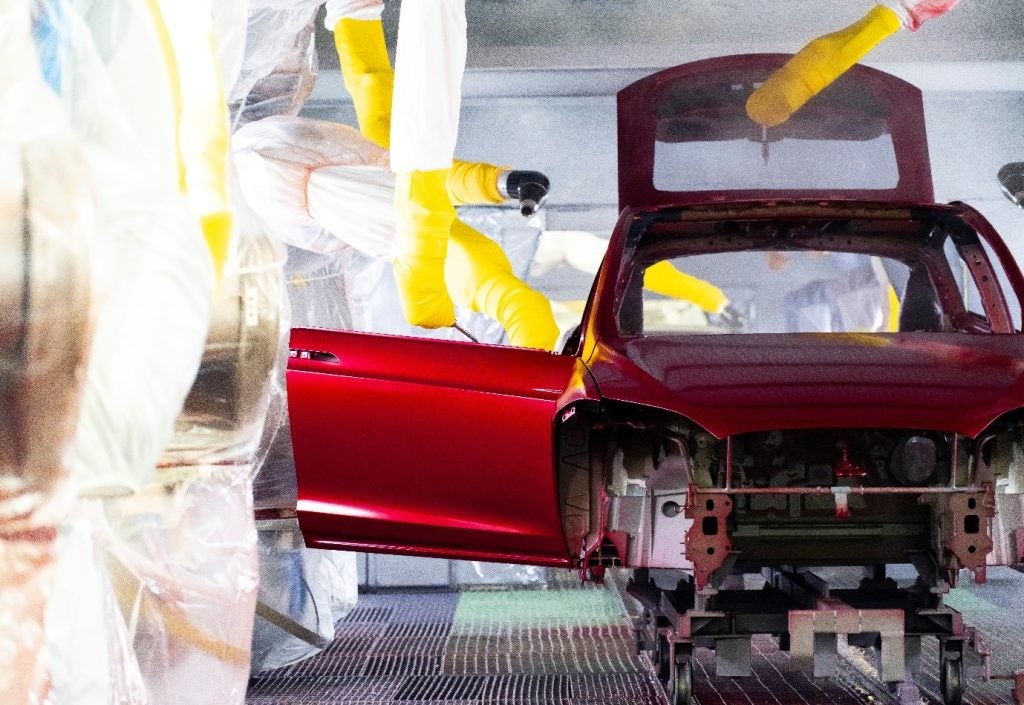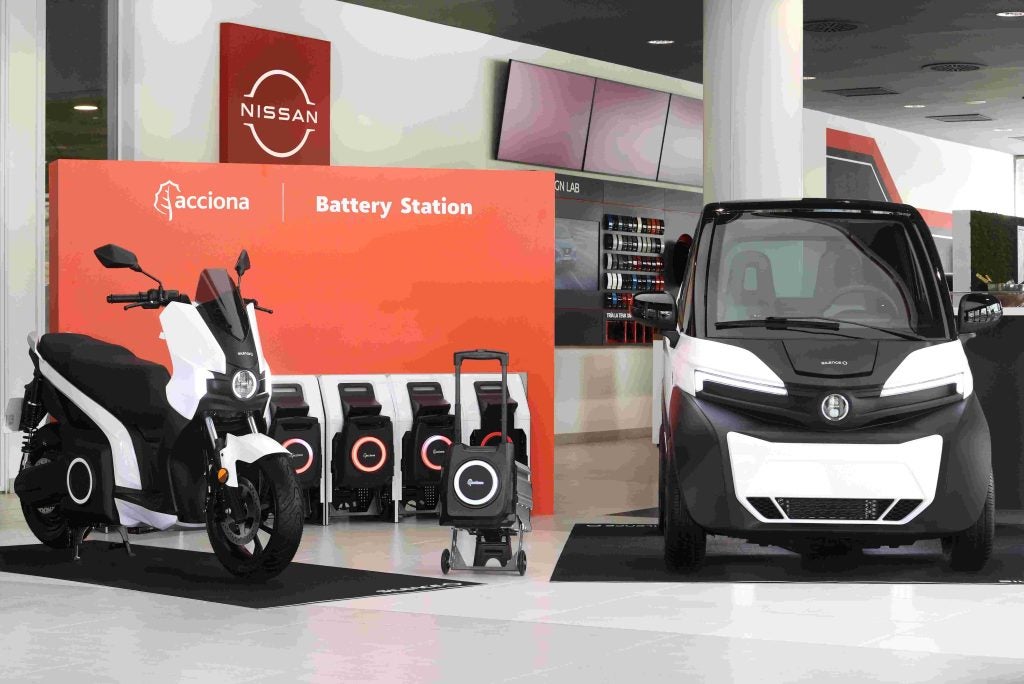Although the world is arguably a smaller place today, it still seems as though things are done somewhat differently-at least initially-in Europe than in the US. Take the utilization of plastic for intake manifolds, for example.
According to John M. Ferrighetto, Business Manager-Americas, DuPont Automotive (Troy, MI), “Polymeric air intake manifolds began in Europe in the mid to late ’70s.” In the US, they didn’t start showing up in sizeable quantities until the early 1990s. Ferrighetto says that DuPont data show that right now, about 65% of the air intake manifolds on passenger vehicles are made with plastic, nylon 66 primarily, with some nylon 6. “By 2004, our data suggests we’ll have a relatively penetrated market here in the US.” He’s talking about as many as 95% of the intake manifolds being produced with plastic. As for the remaining 5%, he believes that there will be exceptions such as applications where there are extreme heat requirements or small volumes that don’t necessarily justify doing retooling from metal to plastic.
Here’s an example of a complex glass-reinforced nylon 66 active manifold for a V6 engine. The manifold is for Rover-it’s the company’s first plastic intake system for a V6-and is produced by mann+hummel with DuPont Zytel 70G35HSL.

Where there is something of a transition occurring, Ferrighetto points out, is in the area of the type of nylon used to produce the manifolds. That is, he says that in 1998, 100% of the air intake manifolds produced in the Americas were made with nylon 66. This is the material that started it all. So the equipment necessary to make manifolds with this material-mainly lost-core moulding-is in place. There is installed capacity. But in the not-too-distant future, manifold redesigns will prompt a change to nylon 6 which, Ferrighetto explains, provides an overall cost advantage in that there is a lower capital equipment cost (the approach here is to make separate parts that are joined through vibration welding), a reduced cycle time, and a slightly lower material cost. The numbers indicate that by 2004, there may be a 60/40 split between 66 and 6.
The largest vibration-welded plastic intake manifold in North America is said to be for the Ford 5.4-liter SOHC Triton V8 engine (used for F-Series, Econoline, Expedition, and Excursion applications). The manifold was developed by a team consisting of representatives from Ford, molder Montaplast North America, and plastics-supplier DuPont Automotive. How big? 16.3-kg of Zytel welding-enhanced PA 66 nylon resin are used. The welding enhancement is important in that there is a 4-metre long vibration weld that joins the bottom and top halves of the manifold.
How well do you really know your competitors?
Access the most comprehensive Company Profiles on the market, powered by GlobalData. Save hours of research. Gain competitive edge.

Thank you!
Your download email will arrive shortly
Not ready to buy yet? Download a free sample
We are confident about the unique quality of our Company Profiles. However, we want you to make the most beneficial decision for your business, so we offer a free sample that you can download by submitting the below form
By GlobalDataAsked why he thinks that nylon 66 was the preferred material at the start, he points out that when there was a switch from metal to plastic, “there was a big perceived risk.” So the properties of nylon 66 provided the level of comfort that was required to ameliorate that risk. But now, there is a better understanding of what the conditions under which the material must perform (lower temperatures, no EGR issues, no chemical exposure), so nylon 6 can fit the bill. Looking out 10 years, Ferrighetto thinks that nylon 6 may account for 70% of the manifolds.
Is Aluminium All Done?
No. But the figures for moving to nylon are pretty compelling: there is a weight saving of as much as 40 to 60% and a minimum cost saving of 25%. “The financial advantage of using nylon is just too great to stem the tide of commercialisation.”
However, Ferrighetto acknowledges that there are always going to be special applications that are suited for aluminium (or magnesium). He points out that when it comes to low volume applications, aluminium can be more economical than plastic because of lower tooling cost. (Which is somewhat interesting as when it comes to, say, outer body panels on a vehicle, the argument is made that the tooling costs for plastic are less than those for metal -steel, in most cases- when it comes to low-volume applications.)
The Next Generation
So there’s a plastic intake manifold moulded by a variety of suppliers. It’s then shipped to an OEM. The OEM adds a variety of components: fuel rail, throttle body, air cleaner box, sensors . . . and installs the whole thing on the car.
But what about providing a module? Which is what some Tier One suppliers are now doing. The OEM no longer has to install an assortment of peripherals, just assembles the single package on the car.
Tomorrow, however, it may go even further. “Our vision is that there is an integrated air-fuel module that combines as many features as possible in a single moulding,” Ferrighetto says. So there may be a manifold with the rocker covers hanging off the side, air cleaner box, throttle body. . . although the practice would be-assuming that these various components are made of plastic-to vibration weld each of them together, Ferrighetto explains that what they have in mind is the use of “shared wall” technology.
What he means by this is that instead of producing, say, both a manifold and air cleaner box then welding the two together, wall-to-wall, the combined manifold/air cleaner box would be designed so that there is a single wall with a functional component on either side of that wall. Advantages of this include weight savings, material cost reduction, and improved under-the-hood packaging.
Still a Place for Metal
Kolbenschmidt Pierburg is producing this air intake manifold with magnesium for the Mercedes V12.
Even in Europe, metal has its place in the production of intake manifolds. Hans-Joachim Esch of Kolbenschmidt Pierburg Group points out that they produce some 1.5 million manifolds per year, of which approximately 30% are magnesium and the balance are aluminium.

Some of these manifolds are used on rather refined vehicles. For example, Kolbenschmidt Pierburg is supplying diecast magnesium manifolds for the V12 engines that are used to power the Mercedes S Class and CL coupes (It is also providing pistons and exhaust dampers for the engines). The shell design of the manifold permits walls in areas to be just 1.5-mm thick.
The Audi A8 employs a three-length diecast magnesium manifold on its 4.2-litre V8. According to Kolbenschmidt Pierburg, which produces the manifold, it weighs just 7 kg, including attachments.

Similarly, the 4.2-litre V8 used in the Audi A8 is also equipped with a magnesium manifold produced by the firm. In this case, the manifold’s 1.5-mm walls contribute to an overall weight of just 7 kg (including attachments). This is a comparatively complex design in that whereas there are some variable manifolds being produced with two-step length selection, there are three lengths in this one, which is said to provide a better torque curve throughout the engine speed range.
Think About It
Mark E. Schuchardt, Technical Specialist, DuPont Engineering Polymers-Automotive, injects, “The key is not just putting everything together, but doing it intelligently.” Schuchardt spends much of his time checking out what other industries are doing with plastics and then determining whether there is applicability in automotive: “I take what is practically doable now in other industries and put them together” (e.g., he points out that some automakers are switching to plastic dipsticks: even though making them out of metal is less expensive, the automakers realize that there is a consumer friendliness associated with having clearly identified service points under the hood, so they are using colour stable polymers for these applications-materials that were developed to produce handles for oven ranges).
Schuchardt thinks that the move to plastic for some under-the-hood components should drive a rethinking of the way things are produced. He asks, for example, “What if the throttle body is a gasket?” He explains that one of the biggest concerns associated with throttle bodies is dimensional stability, “so why not minimize the amount of material; go to a 2D design, which gets you away from problems associated with geometry and dimensional stability.” Because there would be very little to the part, it would be economical to make it out of a more expensive polymer.
Same As It Never Was
As Schuchardt looks to how parts are designed and made, he suggests: “When you need to separate components, make sure that they make sense for assembly and manufacturing concerns instead of using the traditional association of components.” (I.e., “This is how we’ve always done it.”) He continues, “The throttle body is a separate component right now because carburettors were separate components made by separate manufacturers.” But by rethinking these and other parts by the implementation of new designs facilitated by new materials can make a huge difference.
In some cases, the rethinking that’s required is smaller. Schuchardt says that transverse-mounted engines typically employ diecast aluminium torque struts with elastomeric grommets fitted at each end. What they have developed is a strut that’s made entirely out of a thermoplastic elastomer. “The strut is stiff but flexible. It’s not as flexible as rubber, but we’re using the whole length of the strut as a spring rather than the small grommets on the end,” he points out.
In Europe…
One European automotive development that may make its way to the US given the increasing environmental concerns, is a permanent oil filter housing and cap. Schuchardt explains that although the disposable spin-on oil filter that we’re all familiar with is well developed and fairly economical to produce, there are some environmental issues related to the disposal of those filters, which are a combination of metal, plastic, rubber, and oil-soaked paper. In Europe, he says, manufacturers have been producing glass-reinforced nylon caps that are fitted over metal housings. “Now the housings are going to glass-reinforced nylon, as well.” A paper cartridge is then the thing that needs to be dealt with at oil change time. “Although the initial expense is higher,” he admits, “the total lifecycle cost is lower.”
When might it migrate to the US? When there is a US engine program that also has sales in Europe, probably.
By Gary S. Vasilash, Editor-In-Chief







